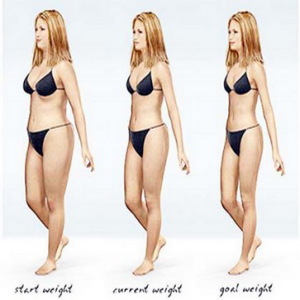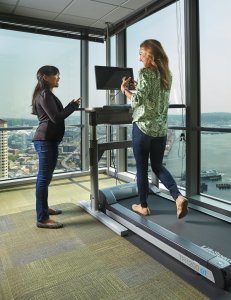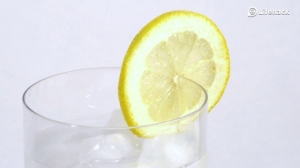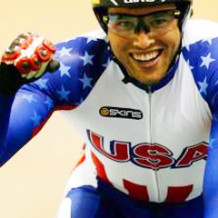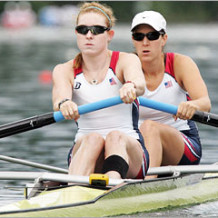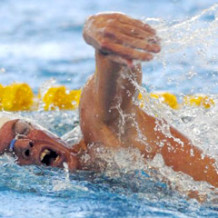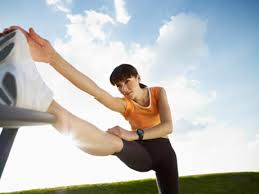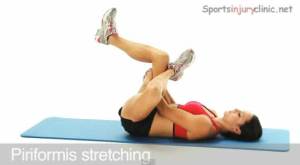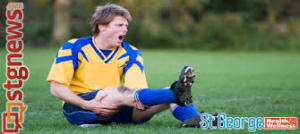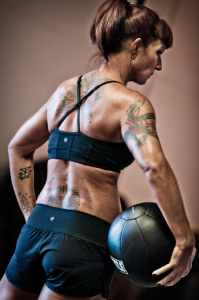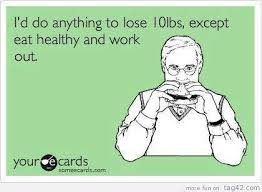Gentle Reader,
My intention is to have my annual physical coincide with my birthday in early August. Travel and the rule that 365 days must pass before the insurance company will pay for another wellness check-up have pushed this forward. We are in early October, and I have been parading to not one primary care physician, but a total of five medical practitioners who administer their tests and make a judgment as to how I am doing.
I notice that I am invested in the outcomes. These are the Gold Stars I work for when I eat kale, carrots, beets in my Shaklee powered protein shake each morning; when I submit to the torture of the trainers at the Xgym each week; when I sit quietly to calm my mind and body; when I climb trails full of roots and rocks; when I stop in the middle of a writing passage to get enough sleep each night so I can do it again the next day.
The practice of gratitude moment by moment eases the intensity of this competitive attitude toward life, but I admit I have been working to outrun illness and death. And crave and expect thunderous applause for winning the race. How ridiculous. No one gets out alive, not even me.
Seventy eight is humbling me. I notice that I chose sitting in the back garden instead of taking that pain-causing walk around the neighborhood. I notice that I sleep in on Mondays, finding longer hours in bed delicious after a too busy weekend. I notice that I put my glasses on immediately upon rising because it is too fuzzy to walk around my familiar setting without them.
I carry a flashlight in my pocket when I go to the hot tub at night because my eyes don’t adjust to the darkness sufficiently for my safety.
I notice I go without a hat just to feel the wind in my hair, ignoring the genetic abnormality may result in melanoma.
I accept that I have lost another half inch in height, that my HDL/LDL ratio is not as good as last year; that my bone density did not improve as a result of intense weight bearing exercise; that I need to go home to put in my hearing aids (which I forgot last Sunday) if I want to hear the proceedings of the meetings and the family dinner party; that I must carry my hiking sticks with me every time I go out, because I never know when the sciatica will make one more step without them unbearable.
The results of my annual physical come in. None of my doctors is worried about me. Internal medicine finds me better than average. Dermatology burns off a few pre-cancerous spots on my face and affirms my overall skin health. Audiologist declares my hearing loss is increasing less than might be expected. The bone people say I am still losing bone as you would expect at my age but not bad enough for medication. The diagnosis is osteoporosis. They ask, “Did you fall this past year?” I crashed heavily on the way down the rocky trail from Lake Twenty Two this past spring. The scar where I tore the skin on my arm is still visible, but I didn’t break anything. “Stay strong,” they say. I don’t get a fight when I decline the flu shot. I accept the new pneumonia vaccine. My upper respiratory system is vulnerable. I’ve had pneumonia twice in the last five years.
Someone in my circle of friends and acquaintances appears in a draped box on the altar every other week. I join the still living to sing the hymns and repeat the promises of eternal life. I look into the eyes of the spouse (I didn’t know her well enough to interpret her stoicism) and imagine the final weeks and days and hours of suffering and grieving. I remember my own two husbands and their dying. I was the strong one, holding everything together. Now I picture myself in their places.
Recently I finished reading the August issue of The Sun Magazine in which the lead interview gives Stephen Jenkinson, the Griefwalker, the opportunity to talk with us about dying. The default manner of death was for the dying person to endure — to not die — for as long as possible.
Health, Jenkinson says, is not the absence of disease or hardship or brokenness. Health includes all of that. It includes dying.
I have no intention of adopting a morbid fatalism going forward in my seventy-ninth year. I do intend to stop striving for Gold Stars. Numbers on the MyChart read out may neither discourage me nor encourage me. They just are. I will pay more attention to the pleasures of the moment, and less to accomplishments. Like two weeks ago when hiking 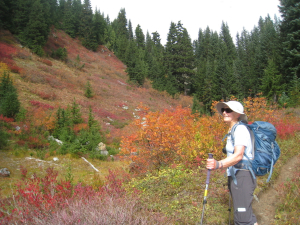 Green Mountain, one of my favorites in the North Cascades. It has been inaccessible for eight years due to a road wash out. It wasn’t in me to climb to the top, so my companions went on up the autumn patch work quilt of color to the newly strengthened fire lookout. I lay on the heather, alternating watching their progress through my binoculars and dozing off in the autumn sun, relishing the quiet, the beauty, the privilege of being in this remote place one more time. I was happy.
Green Mountain, one of my favorites in the North Cascades. It has been inaccessible for eight years due to a road wash out. It wasn’t in me to climb to the top, so my companions went on up the autumn patch work quilt of color to the newly strengthened fire lookout. I lay on the heather, alternating watching their progress through my binoculars and dozing off in the autumn sun, relishing the quiet, the beauty, the privilege of being in this remote place one more time. I was happy.
Jenkinson describes the healthy life as a tripod: In the dominant North American culture we talk about health as a possession, something you have and are responsible for maintaining. But I see our health as like a tripod, a dynamic thing: One leg is your relationship with all other human beings. It’s not possible for you to be healthy when there are people living under a freeway overpass in cardboard boxes. Your health is dependent on theirs. The second leg is your relationship with all in the world that’s not human. If you have only these two legs, you can try to live a good life, but it’s like walking on stilts. The third leg is what gives you a place to rest, and that leg is your relationship with the unseen world, everything not described by the other two. Having all three constitutes health. That’s where it lives. This tripod sustains you. You don’t exist as an individual without these relationships.
This is the kind of health I intend to cultivate. The awareness of relationships. The holding all those friends who no longer climb on physical legs. The awareness and pleasure of my slow (or sudden) progress toward the rest I will share with them.
Thoughts on aging? I’d love to hear them. Let us cultivate an attitude toward health that embraces death, a giving back of ourselves to the Earth.
Be well, Do well and Keep moving,
Betsy
www.HiHoHealth.com shopping for Shaklee
www.EmpoweredGrandma.com travel blog
